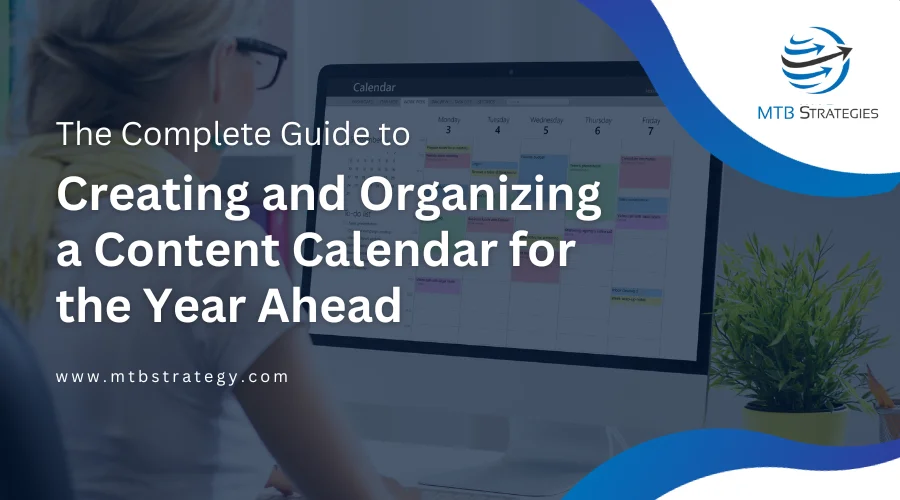In the ever-evolving landscape of digital marketing, a well-organized content calendar stands as the backbone of a successful strategy. It’s a roadmap that guides your content creation efforts, ensuring consistency, relevance, and engagement throughout the year. Whether you’re a seasoned marketer or just diving into the world of content planning, here’s MTB Strategies’ step-by-step guide to help you craft an effective content calendar for the upcoming year.
1. Set Your Objectives
Before diving into content planning, establish clear goals and objectives. What do you aim to achieve through your content? Increased brand awareness, lead generation, conversions, or customer retention? Define these objectives as they will shape your content strategy.
2. Know Your Audience
Understand your target audience—demographics, interests, pain points, and preferred content formats. Use tools like Google Analytics, social media insights, or surveys to gather this information. This knowledge will help tailor content that resonates with your audience.
3. Select Content Themes and Topics
Based on your objectives and audience insights, outline content themes and topics for the year. These could align with industry trends, seasonal events, product launches, or address specific pain points of your audience. Aim for a mix of evergreen and timely content.
4. Choose Your Content Channels
Identify the platforms where your audience is most active. Will you focus on blogs, social media, email newsletters, videos, podcasts, or a combination? Allocate specific types of content to each channel based on their strengths.
5. Create a Content Calendar Template
Select a tool or template for your content calendar. Spreadsheets, project management tools like Asana or Trello, or specialized content calendar tools like CoSchedule or HubSpot can be excellent choices. Structure your calendar with columns for dates, content types, topics, keywords, status, and publishing platforms.
6. Establish a Publishing Schedule
Set a consistent publishing schedule. This could be daily, weekly, bi-weekly, or monthly, depending on your resources and audience preferences. Plan content well in advance to ensure a steady flow throughout the year.
7. Distribute Content Across the Calendar
Start populating your calendar with the planned content. Assign specific dates and topics, ensuring a balanced mix of content types and themes. Consider seasonality, holidays, industry events, and your sales cycle when scheduling content.
8. Collaborate and Assign Responsibilities
Involve your team members in the content creation process. Assign tasks, deadlines, and responsibilities within the calendar. Clearly define roles for content creation, editing, design, and publishing.
9. Include Flexibility and Review Points
Maintain flexibility in your content calendar. Leave room for timely or reactive content, newsjacking opportunities, or adjustments based on ongoing performance analysis. Regularly review your calendar to make necessary tweaks and optimizations.
10. Track and Analyze Performance
As you start publishing content, track its performance. Use analytics tools to measure engagement, traffic, conversions, and other relevant metrics. Analyze what works and what doesn’t to refine future content strategies.
A well-organized content calendar is a cornerstone of successful digital marketing. By setting clear objectives, understanding your audience, planning diverse content, and leveraging appropriate tools, you can create a roadmap that drives engagement and aligns with your business goals throughout the upcoming year.
Commit to regular reviews, stay agile in response to trends, and continuously optimize your content calendar to maintain its effectiveness in an ever-evolving digital landscape.
Creating and organizing a content calendar is a strategic endeavor that requires ongoing attention and adaptation. Hopefully, this guide serves as a comprehensive starting point for crafting an effective plan for the year ahead!
Another awesome article about The Power of CRM for Small Businesses: Transforming Data





